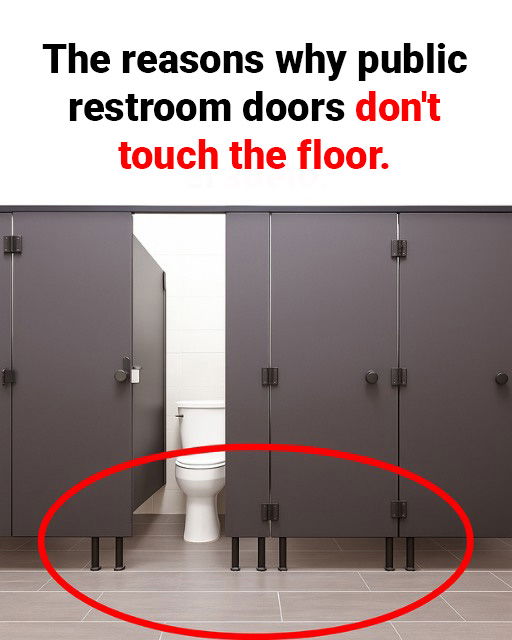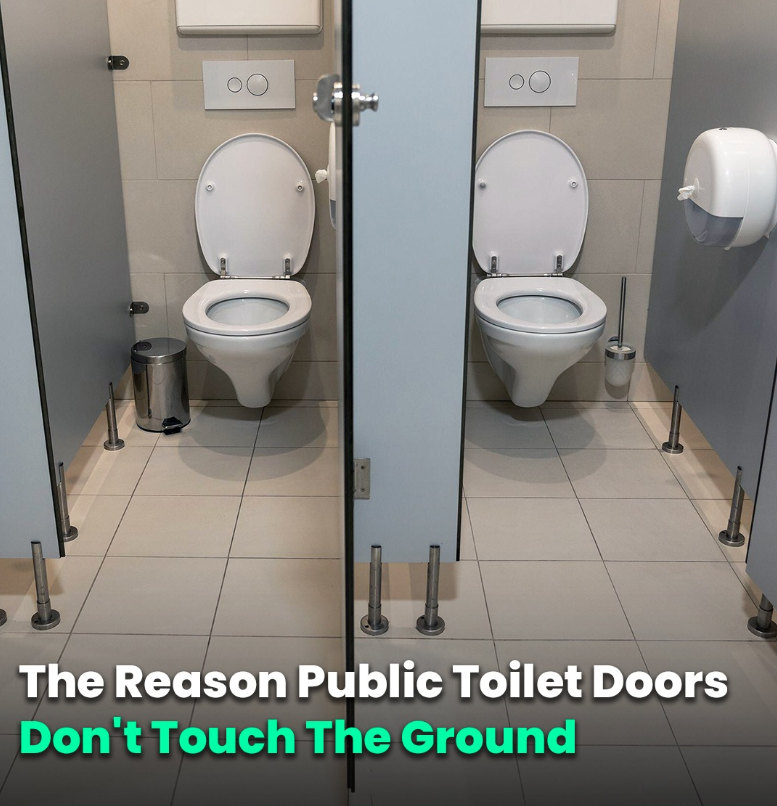
People are still learning why public restroom doors do not touch the ground.
When you enter a restroom, one of the first things you might notice is that the toilet doors do not extend to the floor.
It may appear to be a strange design choice, yet it serves a number of crucial reasons.
@mattypstories, a TikTok maker known for exposing lesser-known facts, has gone popular after explaining why it’s so common in public restrooms.
His movie begins, “You’ve undoubtedly pondered at some point why restroom doors don’t extend all the way to the bottom. But there are numerous reasonable reasons why they do this.
Check out seven reasons why restroom doors don’t touch the floor below:
1. Safety

Matty notes that one of the main reasons is safety.
The space allows for a quick assessment of the situation and provides a point of entry if someone falls unconscious or has a medical emergency inside a stall.
It also allows a user to exit the stall if the door lock becomes blocked; while crawling on a public lavatory floor isn’t ideal, it’s far preferable to being imprisoned in such a small space.
2. Improves ventilation.
It may seem obvious, but public restrooms may be breeding grounds for unpleasant odors and bacteria.
The opening at the bottom of the stall doors improves air circulation, resulting in a fresher environment.
WC Portables explains: “It makes your restroom experience more bearable. Without the break, the odor persists in a stall and becomes intolerable for subsequent users.”
3. Enhanced cleanliness

A space between stall doors might help keep a public restroom clean.
It enables cleaning staff to clean floors more thoroughly and efficiently.
4. Cost-effective
Shorter doors are less expensive to construct and maintain.
They use less material and are easier to install.
Because these doors do not touch the floor, they are less likely to be damaged, lowering the frequency and expense of repairs or replacements.
Matty goes further: “It’s a lot cheaper to buy a door that has part of it cut off than the full door itself.”
5. Prevents bad toilet habits and behavior
The gap at the bottom of the doors deters undesirable behavior, such as graffiti or vandalism, by increasing visibility.
6. It’s easier to establish availability.

It is critical to maintain efficiency in busy public restrooms, particularly those located in airports, malls, or stadiums.
People waiting in line may see which stalls are occupied without knocking or peeping through gaps.
This visibility reduces wait times and annoyance for users.
7. Speeds up queue
Finally, individuals are considerably more likely to ‘wrap up’ their toileting demands if there is a break that permits people to listen to them.
“Toilets with doors of this nature could negatively impact people’s privacy,” the company cautions.
@mattypstories And now you know!?#bathroom#facts#themoreyouknow ♬ Paris – Else
















